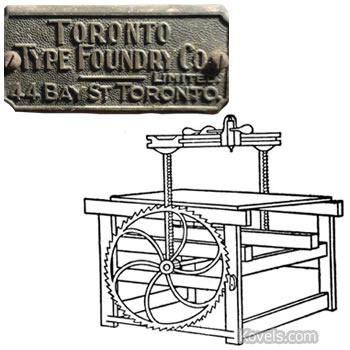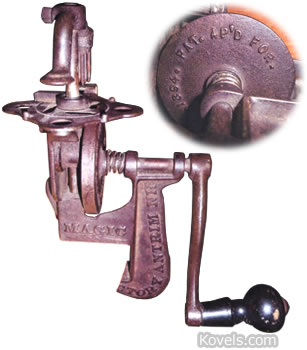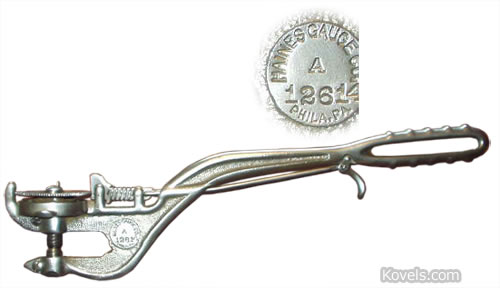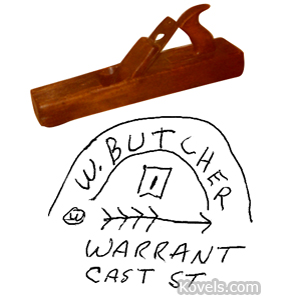Toronto Type Foundry Cutter
Q: My partner and I own this old vintage plough paper cutter and we would like some information about its manufacturer. A metal plate on the machine says “Toronto Type Foundry Co. Limited.”
A: Toronto Type Foundry Co. was in business from 1887 until about 1968. It was founded in Toronto but expanded to offices in several other cities in Canada. The company sold printing presses and other equipment to printers. The plough (or plow) cutter is used to cut through a stack of papers, which makes it especially useful to bookbinders and printers. The blade moves back and forth to cut through the papers. There aren’t many collectors of large printing equipment, but decorators are buying vintage machinery with wheels and gears to reuse in the construction of new and interesting tables.





